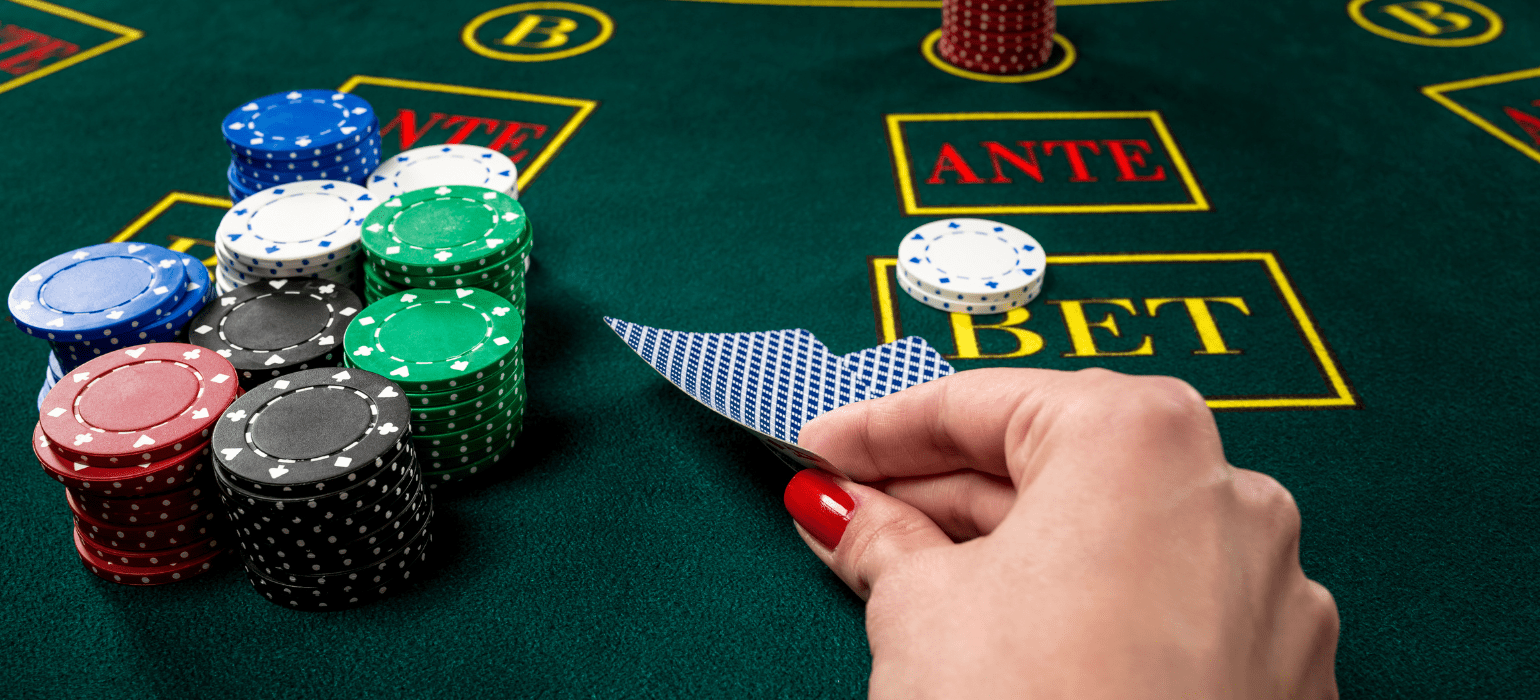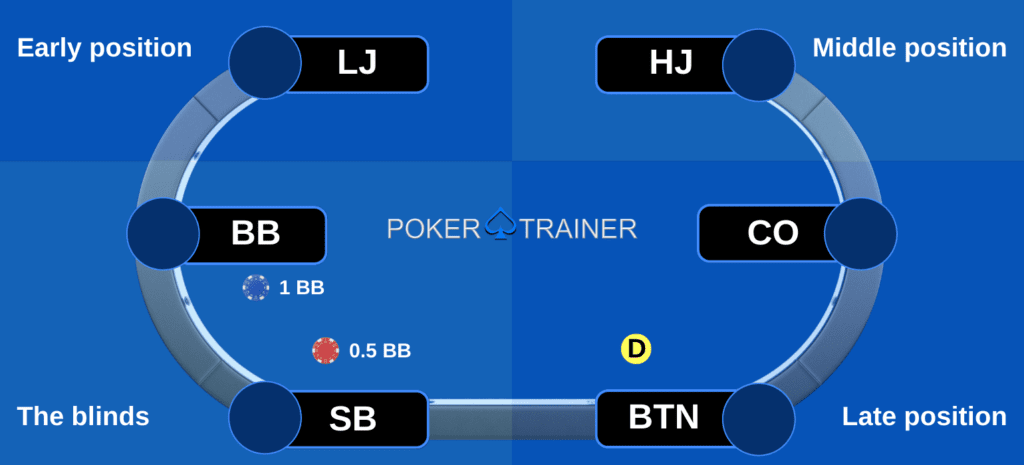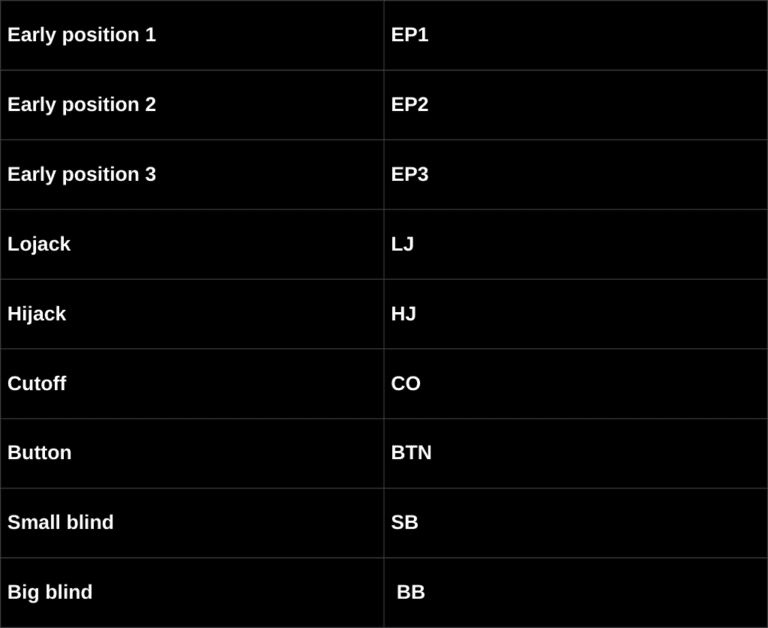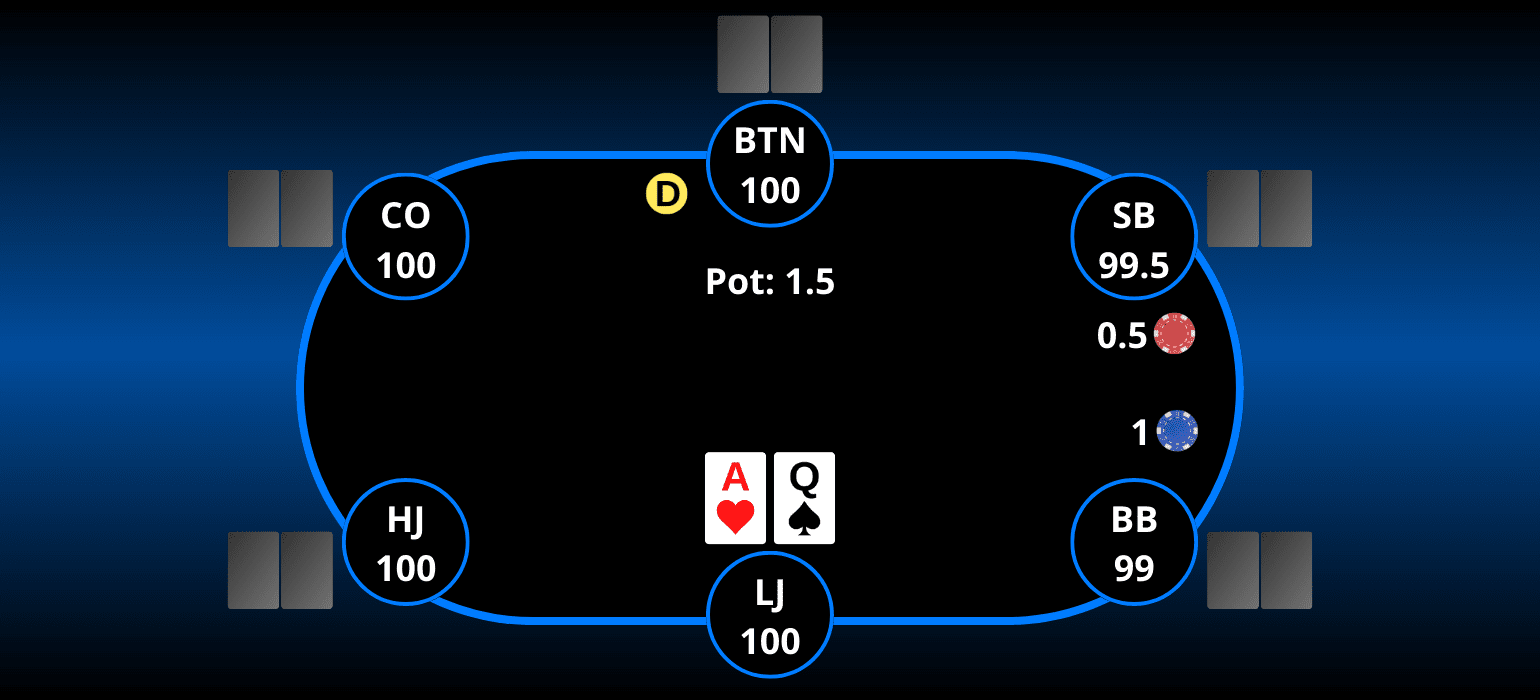
Facing a preflop 5-bet
You raised, someone 3-bet, you 4-bet, and they 5-bet all-in. The rest have folded. When to call: 5-bet bluffs are rare in most games…

In Texas Hold’em poker, ‘position’ refers to the order in which players act in a hand. The positions closest to the dealer button are considered ‘late’, those next to the blinds are ‘early’, and those in between are ‘middle’ positions.
Early Position (EP):
Players in early positions act first preflop, without information on how others might play. This is a disadvantage, so strong hands are generally recommended.
Middle Position (MP):
In the middle, you have more information on some players, but others act after you. A slightly wider range of hands can be played.
Late Position (LP):
Players in late positions act last and have the most information. This is a significant advantage, allowing for more flexible play and strategic bets.The button is the most powerful position, acting last in betting rounds post-flop. It provides maximum information and control over the pot size.
Blinds:
Small Blind (SB) and Big Blind (BB) are forced bets and positions that act first post-flop. They can be challenging to play.
There are different ways to name the positions. Here are the names used at Poker Trainer:

Key Takeaways
Understanding position is essential as it guides hand selection, betting strategy, and overall game awareness. Playing in position often leads to better decision-making and a more profitable poker game.
It is challenging to memorize all the different preflop charts just by looking at them. It is also hard to know if your memory is correct. We strongly recommend practicing preflop ranges in the preflop exercise to help you commit them to memory and get feedback on mistakes.

You raised, someone 3-bet, you 4-bet, and they 5-bet all-in. The rest have folded. When to call: 5-bet bluffs are rare in most games…

In Texas Hold’em, understanding preflop hand categories is essential for beginners, as it sets the stage for the rest of the hand. Preflop, the…

In poker, the value of good preflop play is often underestimated. Here’s why it is important:
Played in every hand: Since preflop…
| Cookie | Duration | Description |
|---|---|---|
| cookielawinfo-checkbox-analytics | 11 months | This cookie is set by GDPR Cookie Consent plugin. The cookie is used to store the user consent for the cookies in the category "Analytics". |
| cookielawinfo-checkbox-functional | 11 months | The cookie is set by GDPR cookie consent to record the user consent for the cookies in the category "Functional". |
| cookielawinfo-checkbox-necessary | 11 months | This cookie is set by GDPR Cookie Consent plugin. The cookies is used to store the user consent for the cookies in the category "Necessary". |
| cookielawinfo-checkbox-others | 11 months | This cookie is set by GDPR Cookie Consent plugin. The cookie is used to store the user consent for the cookies in the category "Other. |
| cookielawinfo-checkbox-performance | 11 months | This cookie is set by GDPR Cookie Consent plugin. The cookie is used to store the user consent for the cookies in the category "Performance". |
| viewed_cookie_policy | 11 months | The cookie is set by the GDPR Cookie Consent plugin and is used to store whether or not user has consented to the use of cookies. It does not store any personal data. |